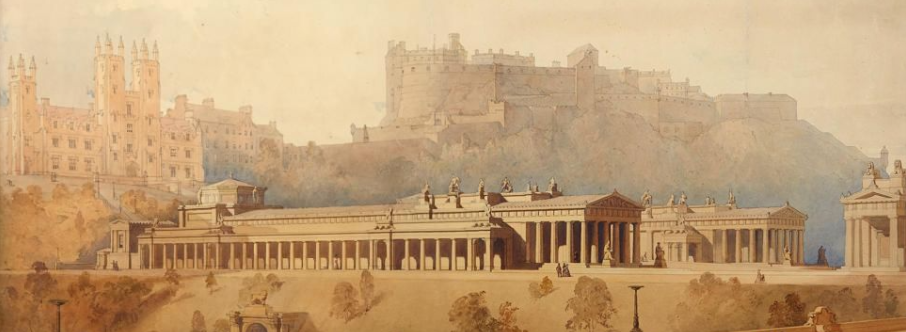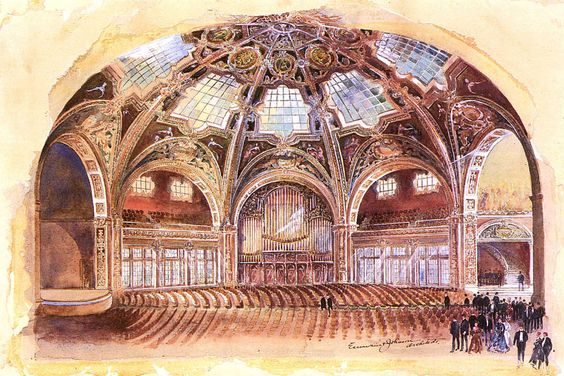Tristarie
Historical Overview
Founding
The Tristarie was constructed in 275AM by Tristan II Thewisy. Son of Tristan I, the last of the three builder lords of the Golden Age of Somae, Tristan II focused largely on his own interests. Unpopular at court, Tristan was often overshadowed by his younger, more accomplished brother, Virion I. During his father's reign, he wandered with troubadours, played female roles in street performances, and spent more time in smoke-filled apartments in the Court of Masks than at the Palace."The heir presumptive was amongst a crowd broken up for a most calumnious street performance - he has only just returned from journeying across the Stonewebs with a troupe of troubadours." - Collegian CrierWhen Tristan II took the throne, his first few years were spent reining in his father's old guard, until the death of his brother's only son cemented his permanence. He then began building towards his magnum opus. Funding court troubadours, legalizing the jester's privilege, and adding music and theatre to the curriculum of the Academy Somae eventually culminated in the construction of the Tristarie in 275AM.
Cultural Impact
Court of Masks
The construction of the Tristarie had the greatest effect on the Court of Masks - the neighborhood surrounding the building. Its winding streets have always provided refuge to those who wish not to be found. The name comes from masked, improvisational plays put on by the Vestrial Brothers, often based around puns and vulgar displays. This was a way to satire Somae society while being able to quickly escape."While many notables have characterized the construction as a victory for the city's less-than-respectable professions, the neighborhood seems to feel different. Like any fringe group, what would seem to others a victory instead dulls the luster and pride that comes with being shunned." - Collegian CrierThe greatest change to the area under Tristan II's rule was not just the Tristarie, but the solidification of the informal jester's privilege sometimes given to the neighborhood's residents, depending on the lord in power. The Tristarie itself would become a hub for satirical performances, tame but nonetheless permitted. More importantly to Tristan II's program - it would also preserve Anharan stories and myths through the stage.
Architectural Overview
The Tristarie Main ChamberMain Chamber
The main chamber of the Tristarie is a rounded square with four recesses branching off of it. From north to south they are: a hallway leading to offices, a lobby, and dining; on the east is the stage; south, the organ; and west is the long, parading entrance hall. The ceiling is almost distractingly ornate, with a dome of light blue stained-glass segments shining between ivory scrolling. Above both hallways are two large balconies of overhanging seats, with two smaller, angled balconies on either side of the organ. In the middle of the chamber are four columns of seats, gently arched and sloped to provide the best view. All combined, the balconies and rows come to around 3,000 seats.Organ
When the building was constructed, it had the largest organ known at the time - and it has only advanced since then. The original organ was an unwieldy beast, with twenty men operating ten bellows, and keys wide enough that they could be struck with an entire fist - necessary to combat the wind. Within a few decades, the original organ was torn down, its bronze pipes melted down and recast into the doors of the College of Arts' music department. The building went without an organ until into the reign of Helene I's successor, Edmyr IV Thewisy. That new organ was designed as an entire, more refined work of art with new mechanical keys.Dome
The dome is made of twelve light blue stained-glass sections. The pendentives are red, with ivory trim. In the four cardinal directions, over each of the four recesses, are golden depictions personifying some of the forms of music in Anhara.Songbird Pendentives
Above the organ recess is a figure of a Songbird, a lay order responsible for recording songs across Anhara, but specializing in orchestral and sacred music. The two panels to its immediate left and right have depictions in relief and in fresco of various scenes from famous Anharan sacred music, such as the ascent of Vestria.Ealaine Pendentives
Above the stage recess is a figure of Ealaine, goddess of art, representing heroic music. The two panels to its immediate left and right have depictions in relief and in fresco of the Thewisy portions of the Legendary Cycles of Anhara - most notably the Crimson Quill oath of Galindaan The Wise.Bardic Pendentive
Above the hallway recess is a figure of a fence-bard, bards which wander the countryside and preserve local tradition through music, representing rustic music and oral history. The two panels to its immediate left and right have depictions of a more traditional Bard, more common in the Eastmarches as compared to the fence-bards of the Vinelands and the Vestral Downs.Tristarie Pendentive
Lastly, above the entrance recess is that of Tristan II Thewisy, namesake of the building, representing acting and dance. To its left and right, the two panels depict in relief and in fresco great actors of the early Tristarie, holding their masks in hand, and crowds of the reborn Vestrial Brothers, both in revelrous scenes.Wings
The wings of the Tristarie are accessed by the hallway recess on the north side of the building, or from behind the stage on its east. Exiting the main structure from either of these directions leads to the same L-shaped building."Gone are the days of living in garrets above the home of the widowed wife of this-professor-or-another, or playing a tune in a coffee house for a bit of dinner. Now we are merely the hallowed 'artists-in-residence.'" - Selwyn Dowdy, Playwright, 301AMOn the hallway recess side is half of the structure dedicated to offices, a lobby, and dining. On the stage side is half of the structure dedicated to storage, costume and makeup, and dorms.
Type
Theatre / Concert hall
Parent Location


Comments